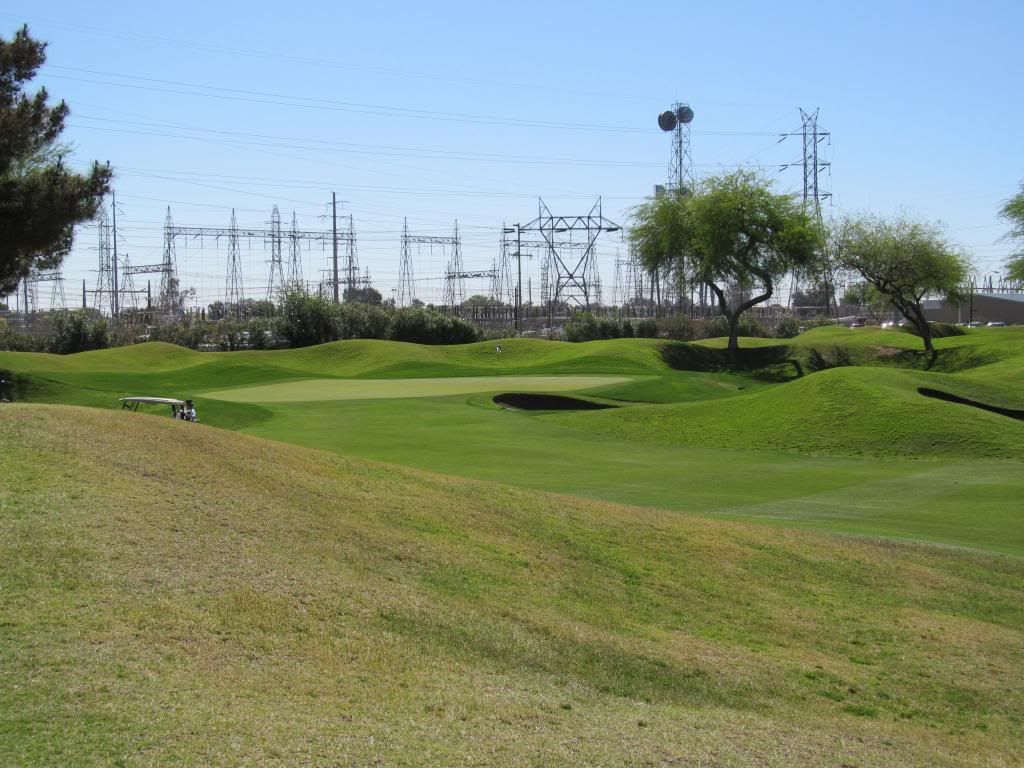#1, par 4. 402/341A bit of a “handshake opener,” but still a hole with a lot of Pete Dye in it. It’s a gentle dogleg right with a wide fairway and all the trouble down the right side (bunkers or, way right, OOB). It’s short enough that there’s little reason to challenge the right side, and it provides no better angle to the green sunken among large mounds. But from all but the back tee you can see that flagstick, and the line of charm is strong.
View from just left of the tee:
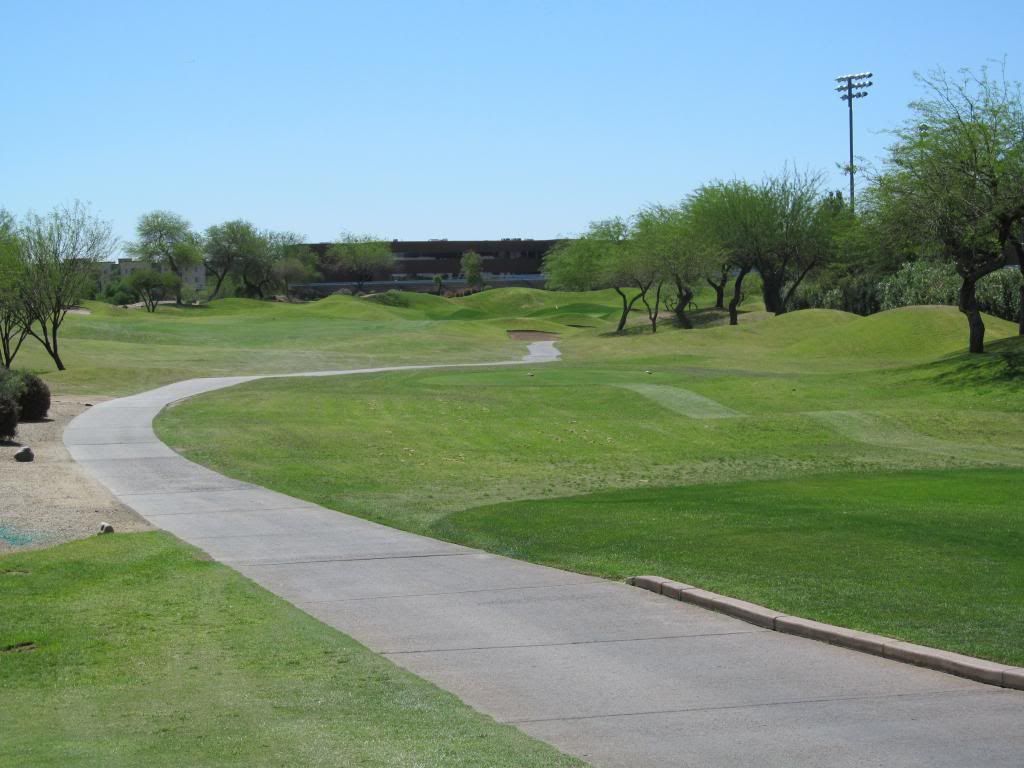
Approach to the green. A wayward shot in might find a deep grass swale or catch on of the ridges and kick toward the surface. And what a view beyond that green!
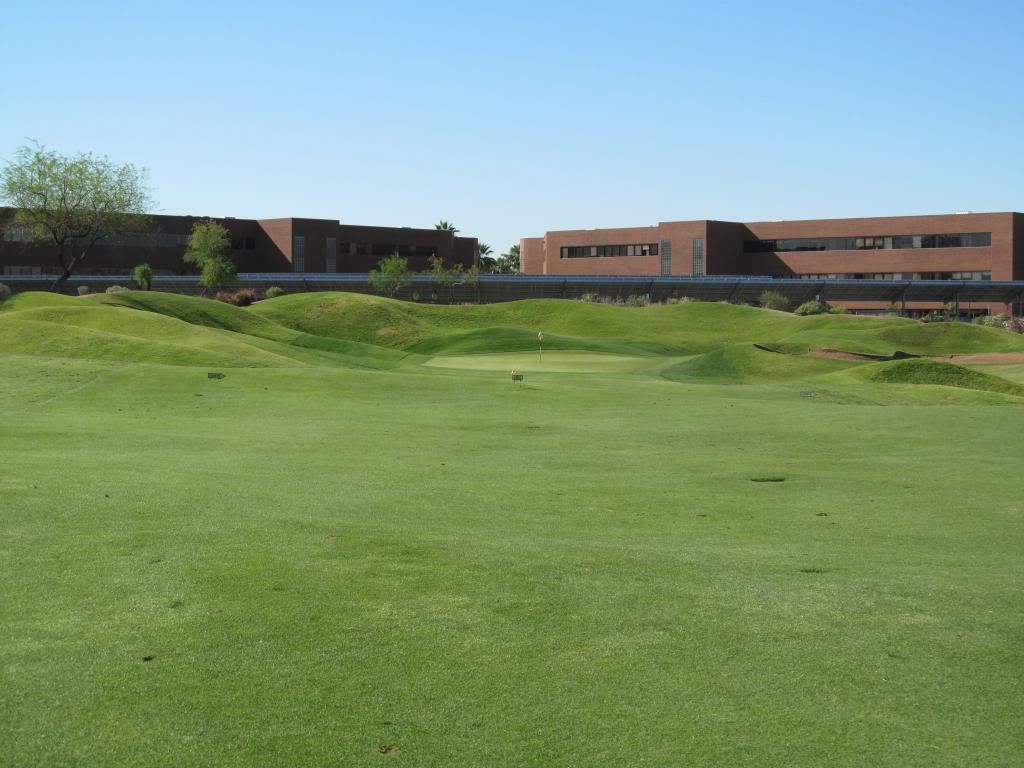 #2, par 4. 323/296
#2, par 4. 323/296A short 4 with lots of options. From the tee, the view is dominated by three deep-faced bunkers. From the tips, it’s about 280 to clear the big one on the right. That’s the preferred line if trying to get it up in front of or on the green. Carrying that “center line” (so it seems) bunker is a bit of a trick. Over the bunker on that line will leave a tricky pitch.
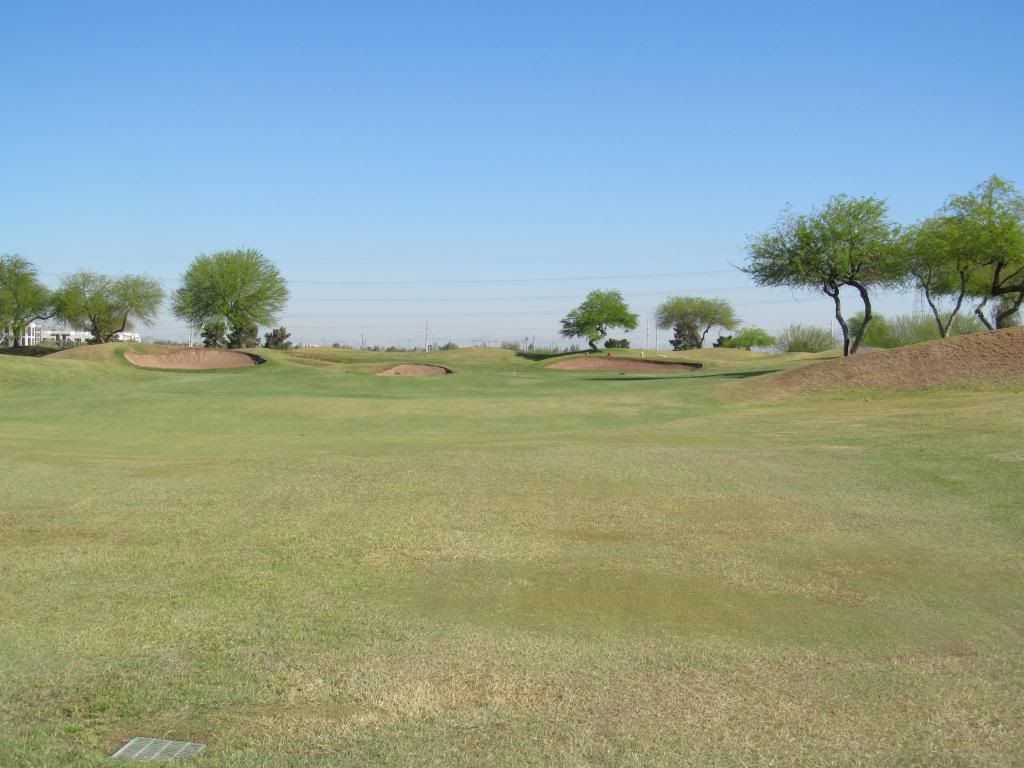
Tee shots played shot of the big bunker on the right get the best angle down the length of the green, but the view is largely blocked by the bunker.
The green is angled away to the left, narrows toward the back, and surrounded by deep grass bunkers. From the bottom of these, to a back pin, it can be difficult to keep a ball on the green (don’t ask how I know).
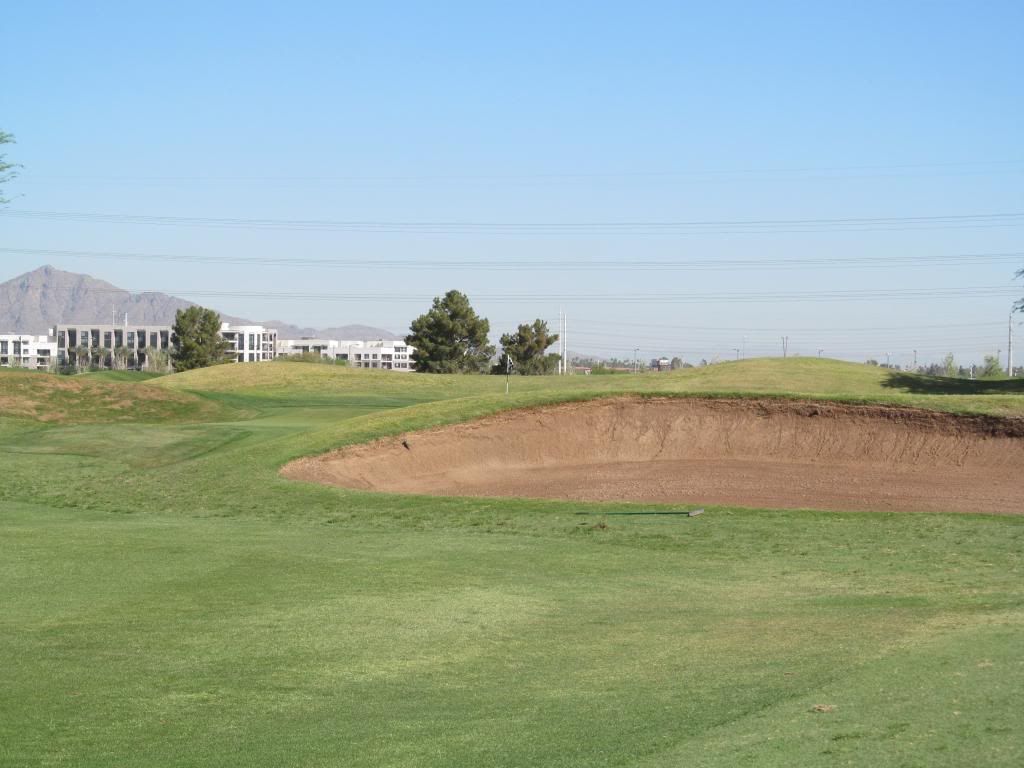 #3, par 4. 423/373
#3, par 4. 423/373An almost 90-degree dogleg left, the view from the tee is of mounds and a single bunker left. Again, the play is not to challenge that side, but to try to drive it as far down the right side as possible to open up a view of the green.
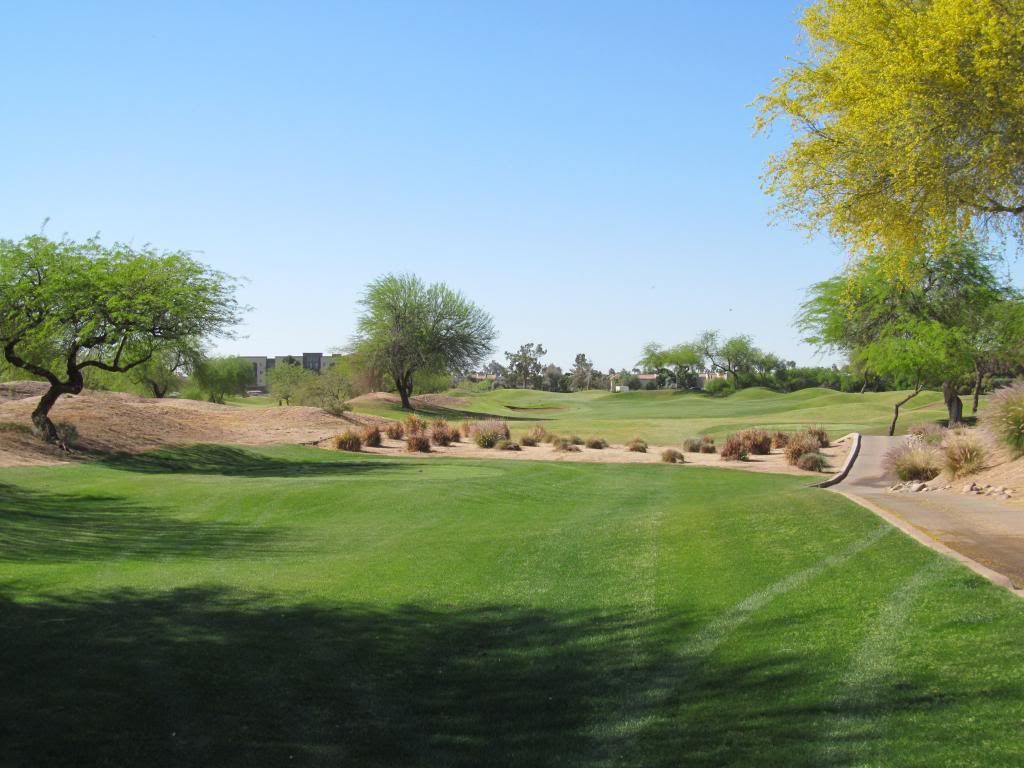
This is a view down the fairway, toward the green, taken from the mounds between 2 and 3 (again, please don’t ask why I happened to be there).
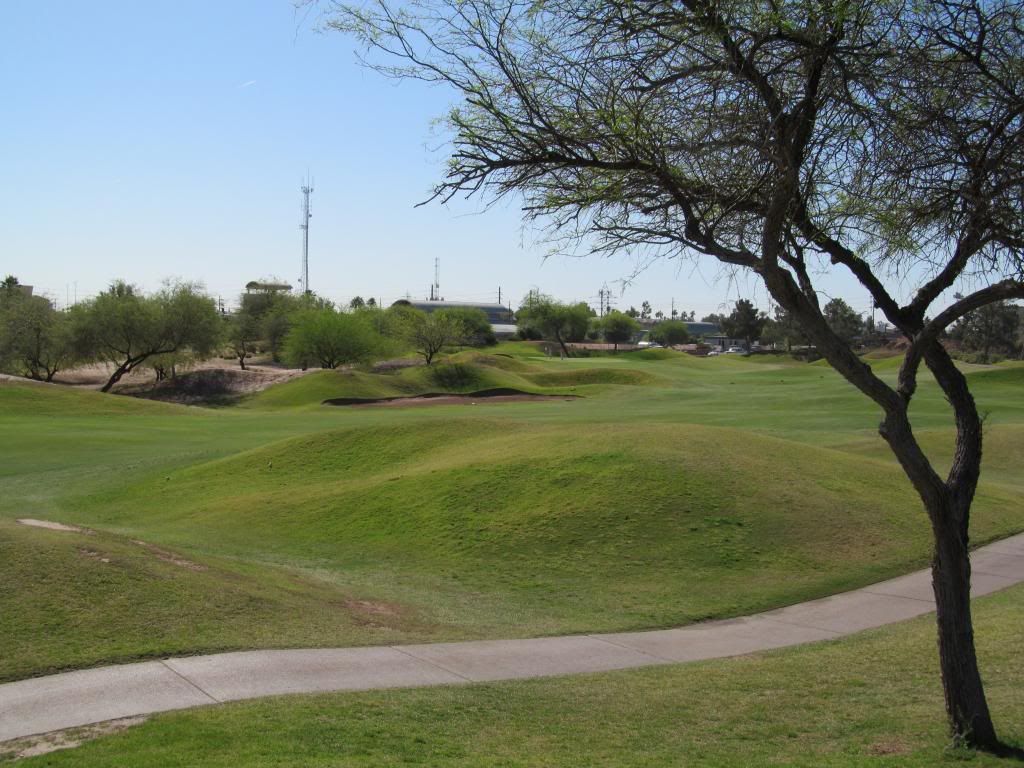
A drive down the left side doesn’t offer much of a view (the green is over the tree)
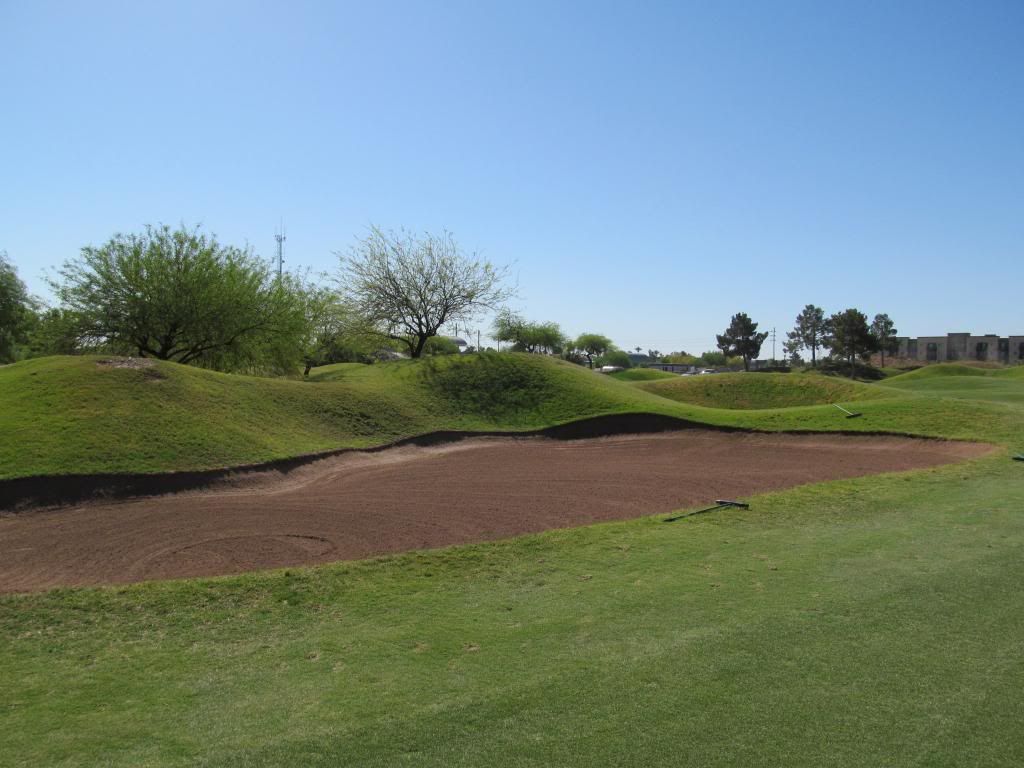
A better look at the large green and put bunker set into the knob front left:
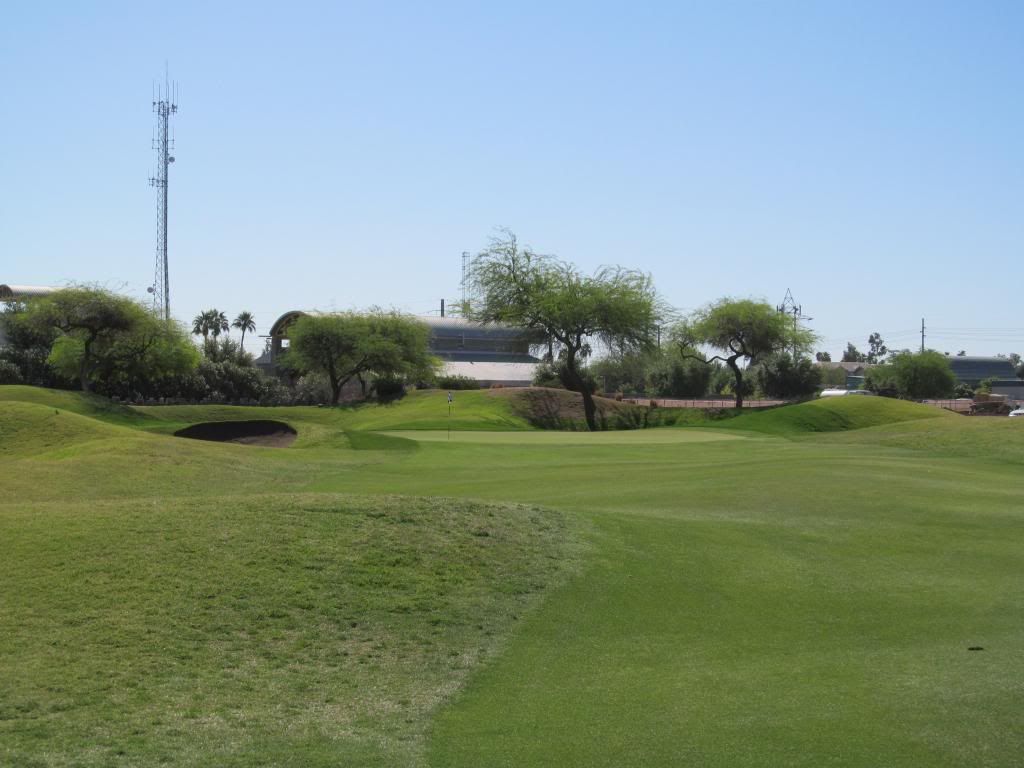
From the right side of the green. It’s circular and divided by a small high’s back dividing the left and right side of the green. When the hole is tucked left behind the knob and bunker, this ridge makes life difficult for those who play safely to the middle of the green.
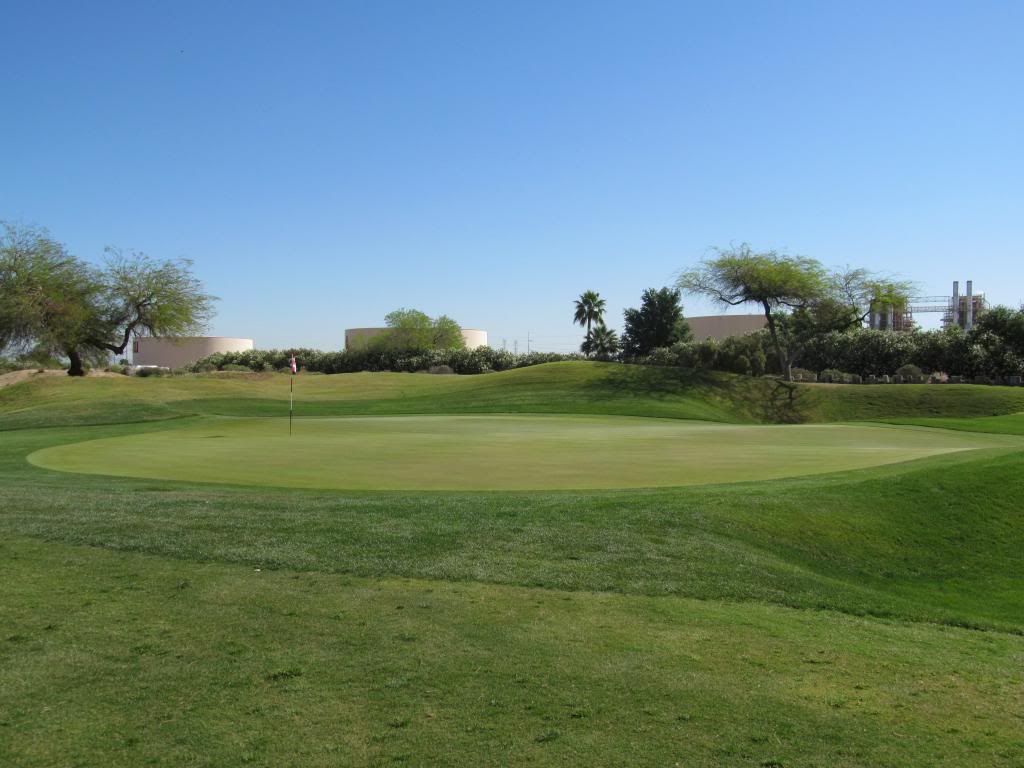 #4, par 4. 420/389
#4, par 4. 420/389Water! Railroad ties! Now even the casual golfer knows he’s on a Pete Dye course.
The bunker in the center right of the fairway is out of reach for most players (320 from the tips). The decision is whether you want to drive to the wide part of the fairway there, which leaves a better angle to the green, or challenge the left side, which opens up the view (but only slightly (there’s another big knob in front of this green that blocks the view of the bottom of the flag for most hole locations). Then again, from behind the big bunker on the right, you might have no view of the green at all.
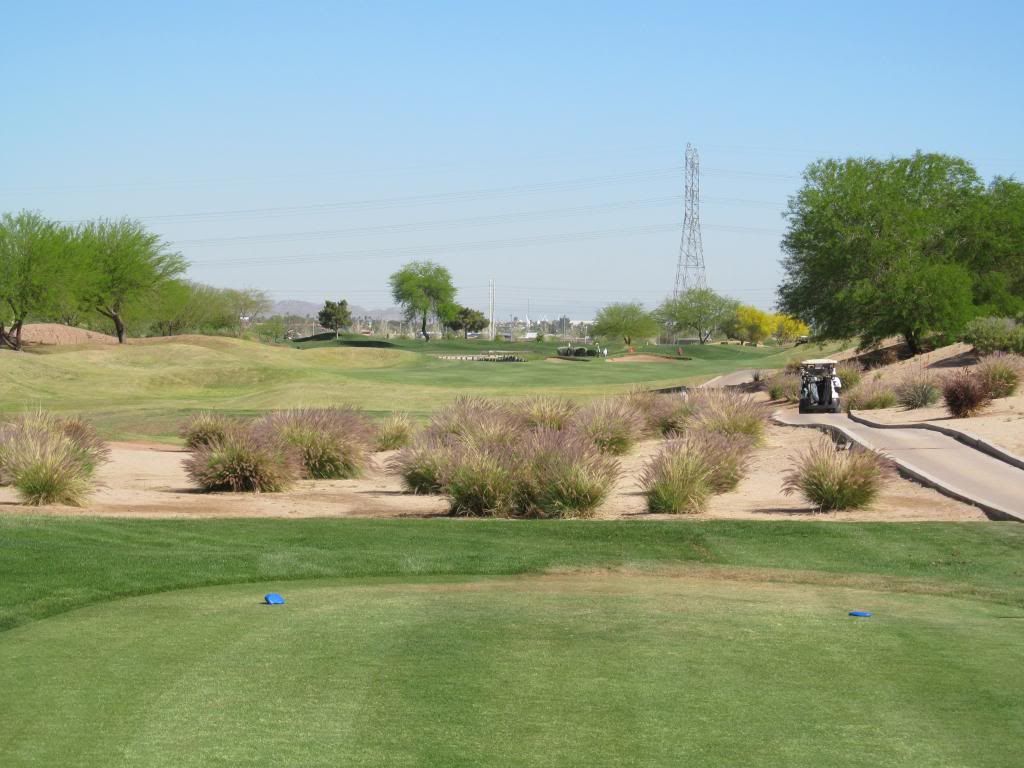
There’s plenty of room short and right of the green, but the lake immediately abuts the surface on the left and wraps around the back.
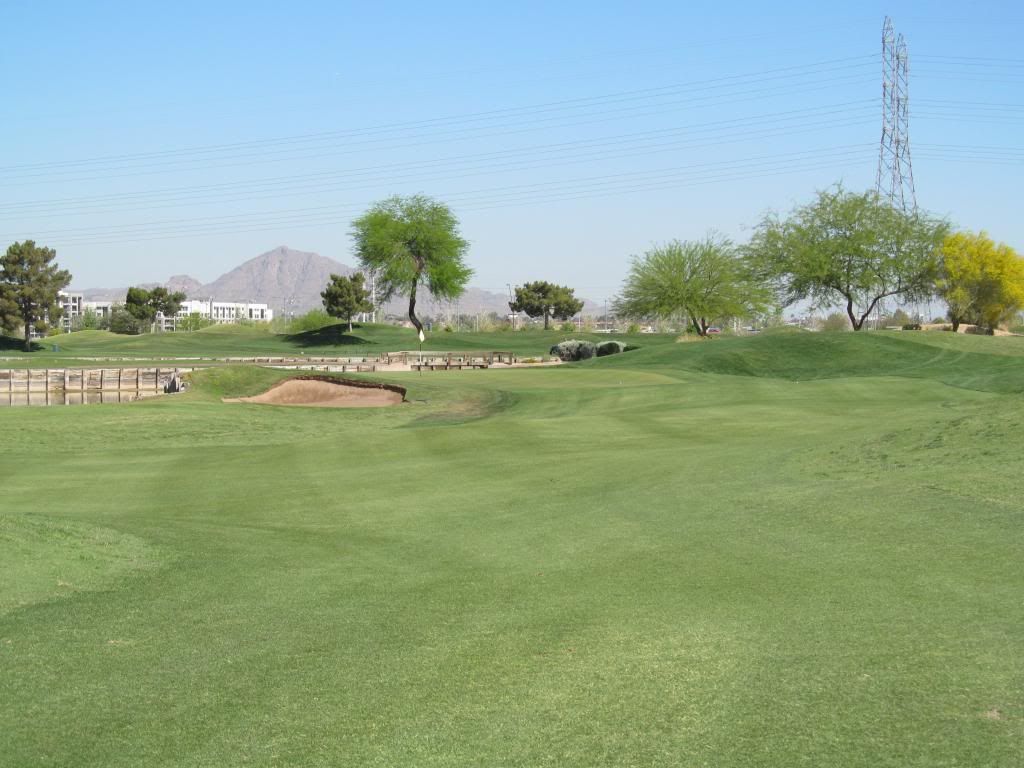 #5, par 4. 493/462.
#5, par 4. 493/462.Our fifth par 4 in a row to start, this was originally a par 5, and was a much better hole then.
From the tee, the hole turns gently to the right. There are a few trees and a waste area right of the fairway, and big trouble in the form of an incredibly out of place copse of pine trees and a bunker to the left.
Previously, the decision was whether to lay back of where the fairway narrows and turns and avoid all this potential trouble off the tee, or challenge it with the reward of potentially getting home in two. That’s much less of an option now, and not just because they changed the par number on the card. Though listed at 462, I don’t think I’ve ever seen the gold tee back there since the hole was converted. It’s usually up in the 420 range. A layup to the wider first part of the fairway from that tee would be a shot of little more than 140-160 yards. No one is going to play the hole that way (on purpose).
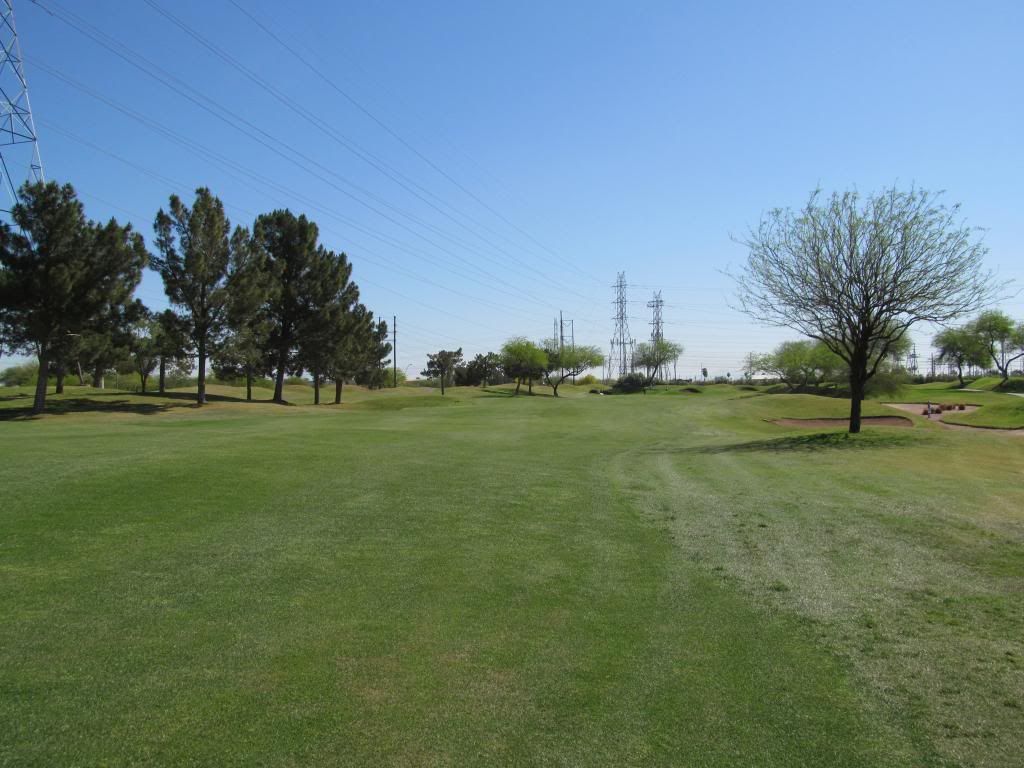
The green is alps style, hidden behind this large mound with two bunkers in it’s face. You can only just see the top of the flag to get an idea of where the hole and green are. What’s not immediately apparent is that these mounds are a good 30 yards short of the putting surface. In fact there’s another set of bunkers immediately fronting the green and many a player has happily seen his ball successfully carry the mounds only to find he’s bunkered, or otherwise not putting.

You can see just the top of the flag for this far right hole location, over the top f the right bunker.
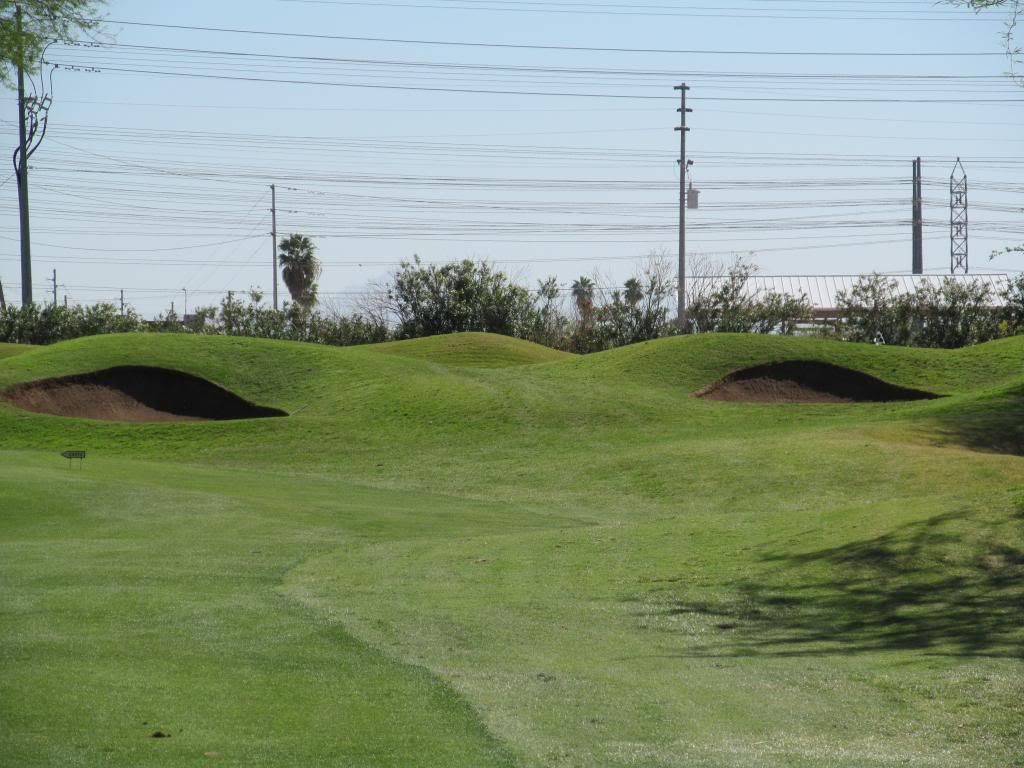
As a par 5, or to the shorter hitting but prudent player, there is plenty of room to play around to the left and get some view of the green for your third shot.
